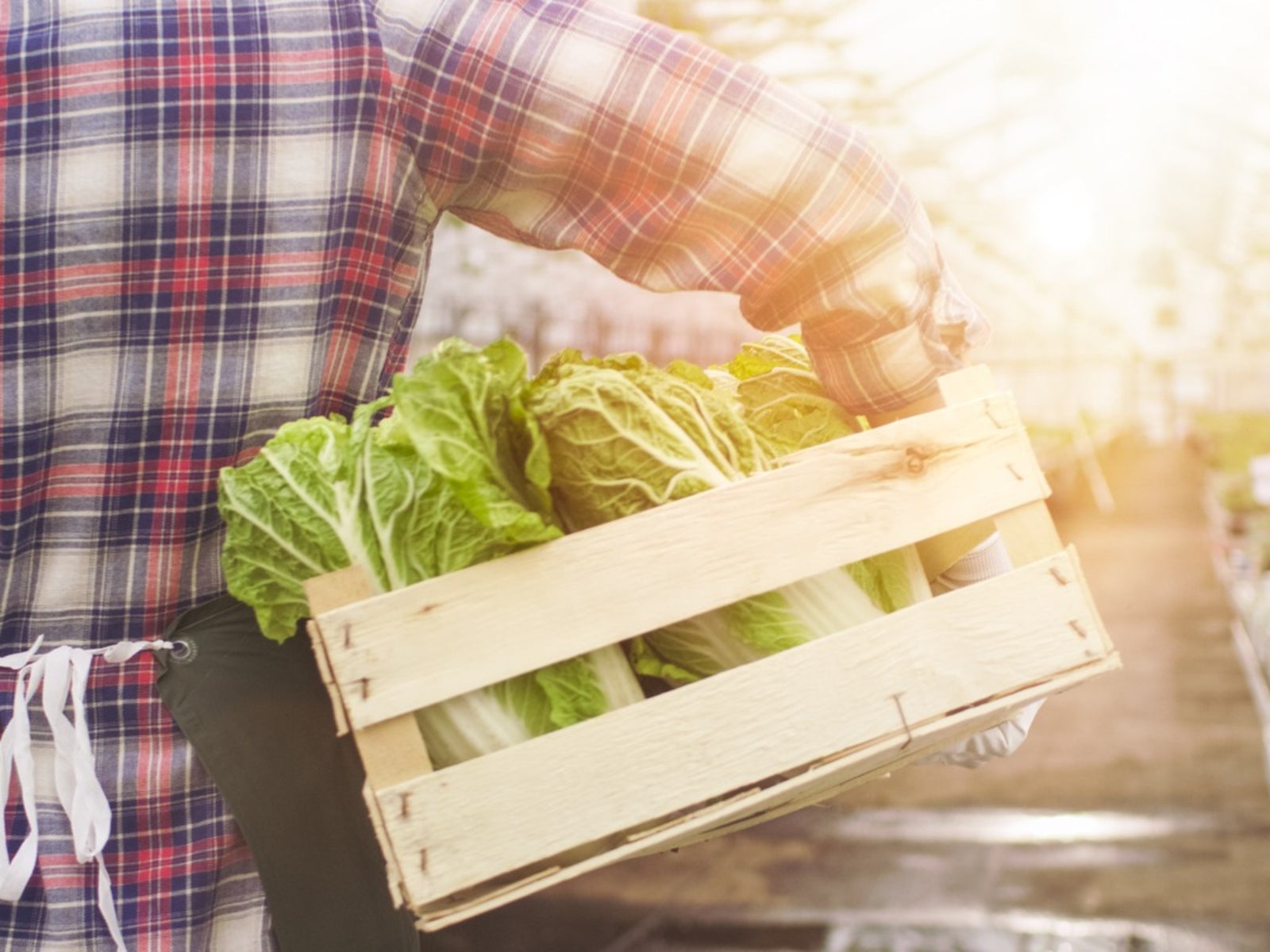Greenhouse Vegetable Plants: Growing Vegetables In A Hobby Greenhouse

If you're like most gardeners, you're probably ready to get your hands on some dirt by the middle of winter. If you install a hobby greenhouse next to your home, you may be able to make that wish come true virtually every day of the year. Growing vegetables in a hobby greenhouse allows them to extend the season, sometimes by months, giving you a year-round gardening opportunity. While you can't grow all vegetables in a greenhouse 12 months of the year, you can plant cool-weather vegetables and let them grow through the worst of the winter weather with a simple heating system installed.
How to Grow Vegetables in a Greenhouse
Greenhouse vegetable plants may end up growing faster and stronger than those grown in a traditional garden, because you will be giving them the ideal environment for growth. When it's below freezing outside, passive solar collectors and small heaters can leave the interior of a greenhouse cool but perfectly liveable for most spring vegetables. In the heat of the summer, fans and other cooling units can protect tender plants from the scorching heat of a southern climate. You can grow greenhouse vegetable plants directly in the soil inside the enclosure, but container gardening is a more efficient use of space. You can take advantage of all three dimensions by placing planters on shelves, using trellis systems for vine plants and hanging planters for smaller vines, such as cherry tomatoes and strawberries.
Winter Vegetable Growing
Growing winter veggies for greenhouses is possible because most cool-season plants can tolerate temperatures near freezing, as long as their soil isn't muddy. Container gardening solves that problem by giving the plants a perfect mix of potting soil. If you're planning on winter vegetable growing when building your greenhouse, add a passive solar collector such as a wall of black-painted water jugs. This will collect solar heat during the day and reflect it into the greenhouse at night, helping to prevent freezing. Add an additional small heater, either propane or electric, for the coldest days of the year. Once you have the greenhouse built, experiment with plant placement for the best growing conditions for each variety. Cool season plants such as peas, lettuce, broccoli, carrots and spinach all have slightly different needs, and moving them around in the enclosure is the best way to find what works best with each plant.
Gardening tips, videos, info and more delivered right to your inbox!
Sign up for the Gardening Know How newsletter today and receive a free copy of our e-book "How to Grow Delicious Tomatoes".
-
 12 Lush Alternatives To A Lawn For Sustainable Spaces
12 Lush Alternatives To A Lawn For Sustainable SpacesAlternatives to a lawn are beautiful and also beneficial to your local ecosystem and its pollinators. Explore our top picks for plants to replace grass.
By Tonya Barnett
-
 Types Of Tomatoes Explained: Explore The Many Wonderful Shapes, Colors, Flavors, & Best Uses
Types Of Tomatoes Explained: Explore The Many Wonderful Shapes, Colors, Flavors, & Best UsesThe world of tomato varieties is vast and fascinating. Learn about the key types to grow in your garden, tailored to your preferences and space.
By Amy Grant